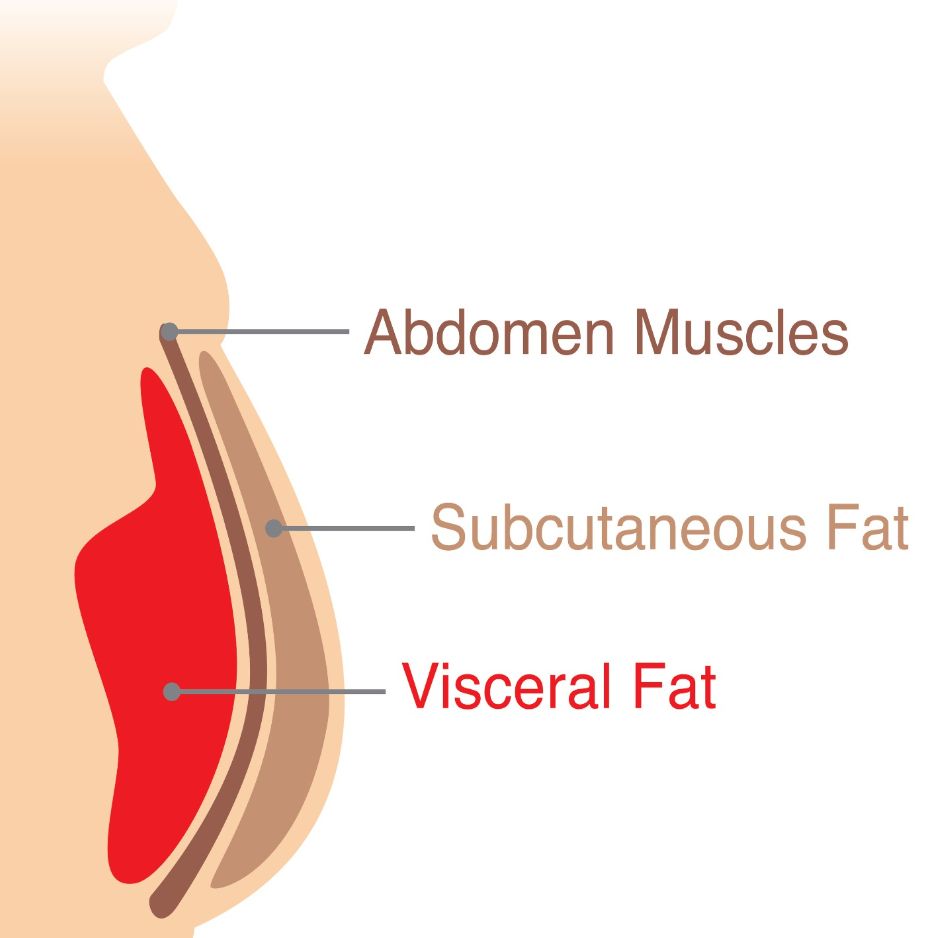Weighted Hula Hoop: Benefits, Routine & Safety Tips

Weighted Hula Hoop: Benefits, Routine & Safety Tips
Weighted hula hooping is a low‑impact, rhythm‑based workout that raises your heart rate, challenges balance, and engages your core—without pounding your joints. Beyond the fun factor, studies suggest hooping can trim abdominal fat and improve cholesterol when you practice consistently.
This guide covers what matters most:
- The science‑backed benefits
- How to pick and size your hoop
- A simple 6‑week routine you can start today
- How to accurately measure changes in body composition
Weighted Hula Hoop: At a Glance
- Calorie burn: A 30‑minute session burns about 200 calories on average (≈ 7 cal/min), similar to step aerobics or cardio kickboxing, according to the American Council on Exercise (ACE).
- Fat + muscle changes: In a 6‑week randomized crossover trial, weighted hooping reduced android (abdominal) fat percentage and increased trunk muscle mass vs. walking. It also lowered LDL (“bad”) cholesterol (2019 RCT).
- Beginner fit: Choose a hoop that reaches between your waist and mid‑chest when stood vertically and weighs around 1–2 lb, which makes it easier to keep the hoop moving while you learn (Mayo Clinic).
- How often: Start with 10–20 total minutes per session, 2–3 times per week. Many beginners notice changes in core endurance and waist size within 6–8 weeks when consistent (GoodRx).

Science‑backed benefits (and what to expect)
- Calorie burn and heart rate: In research commissioned by ACE, participants averaged ~210 calories in 30 minutes with heart rates around 84% of age‑predicted max—firmly vigorous cardio (ACE). Mayo Clinic reports similar 30‑minute estimates of ~165 calories in women and ~200 in men (Mayo Clinic).
- Abdominal fat and trunk muscle: A randomized crossover trial (n=55, overweight adults) found 6 weeks of weighted hooping (1.5‑kg hoop) significantly decreased android fat percentage and increased trunk muscle mass compared with matched‑energy walking. Hooping also reduced LDL cholesterol while walking improved HDL and systolic blood pressure (2019 RCT).
- Waist and hip circumference: A 6‑week training study in women reported average reductions of ~3.4 cm at the waist and ~1.4 cm at the hips, without measurable changes in isometric torso endurance—suggesting more of a composition/redistribution effect than a raw endurance boost (PubMed trial).
What this means for you: Weighted hooping is joint‑friendly cardio with a strong core‑engagement feel. If your goal is a smaller waist, pair hooping with strength training and nutrition basics. Spot reduction isn’t a thing, but hooping helps you hit weekly activity targets and stay consistent (Mayo Clinic).
Is a weighted hoop right for you?
Weighted hooping is a great fit if you want low‑impact cardio that challenges coordination and trunk control. It’s especially appealing if you:
- Prefer short, fun sessions over long cardio blocks.
- Want a gentle, at‑home way to raise daily activity.
- Need a joint‑friendly option while you build up strength and conditioning.

Caution or medical clearance is smart if you have current low‑back pain, a history of spine issues, a hernia, are pregnant, or are early postpartum. Mayo Clinic advises talking with a clinician—especially if you have back problems—before starting, and stopping if pain develops (Mayo Clinic). If you’re postpartum or rehabbing your core/back, follow guidance from a qualified clinician (for example, a pelvic floor physical therapist) before returning to hooping.
How to choose your weighted hula hoop (simple guide)
Follow these steps to pick a hoop that’s easy to learn on and comfortable for your midsection.
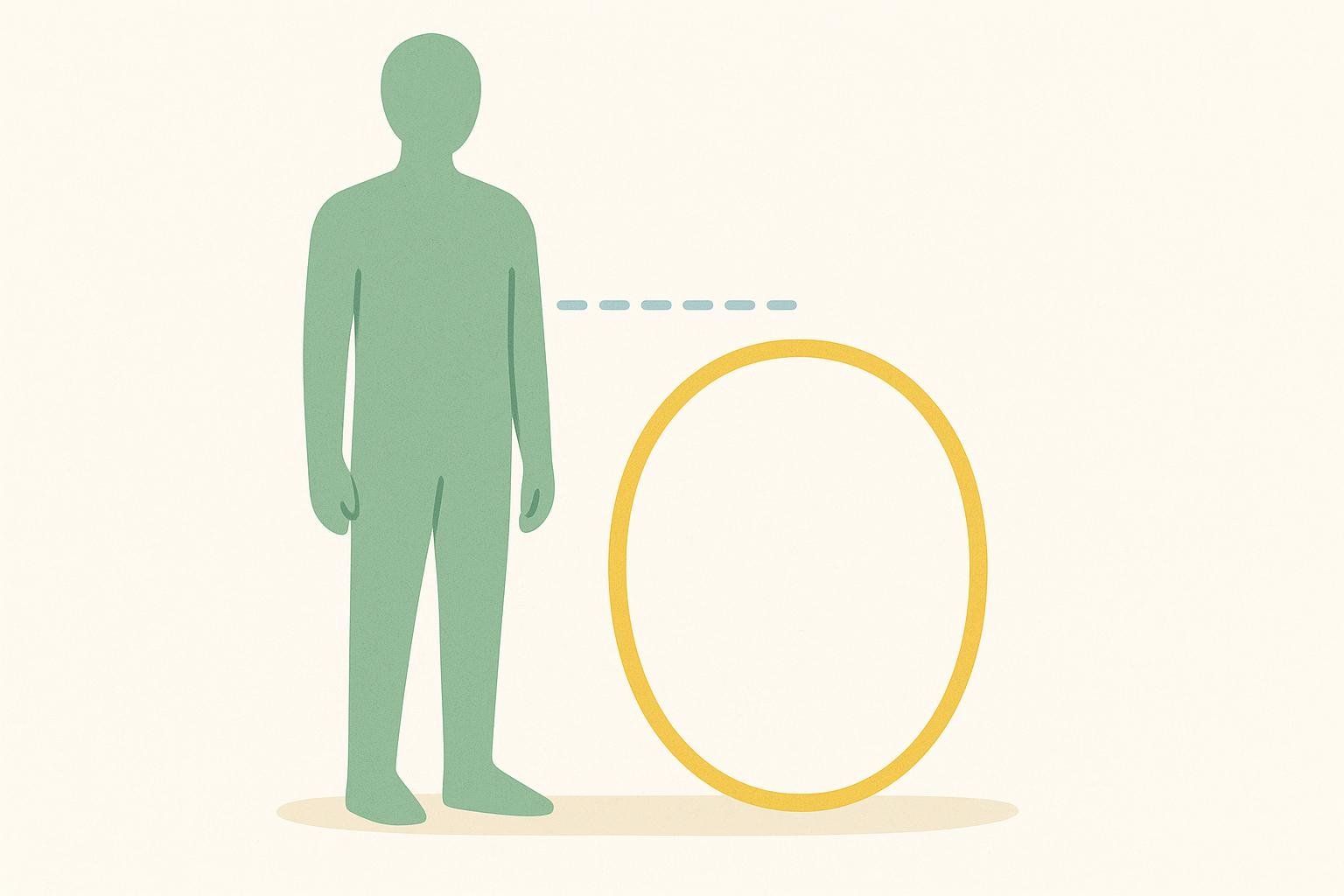
- Diameter/height target
- Stand the hoop upright: a good beginner fit is when the top reaches somewhere between your waist and mid‑chest. Larger hoops spin more slowly and are easier to keep going while you learn (Mayo Clinic).
- Modern fitness hoops commonly range ~37–45 inches in diameter (ACE).
- Weight
- Start light‑to‑moderate: 1–2 lb (≈ 0.45–0.9 kg) is typical for beginners; heavier isn’t always better and can increase bruising risk (GoodRx).
- Style
- Classic ring hoops are the standard for fitness. “Smart” hoops (belts with a tethered weight) can be convenient in tight spaces, but ensure a comfortable, secure fit and avoid excessive friction around the waist (GoodRx).
- Comfort features
- Smooth interior or light padding can reduce hot spots. Avoid overly rigid ridges or aggressive nubs until your technique and tolerance improve.
- Fit check
- When you twirl on a relaxed exhale, you should be able to maintain momentum for several rotations without excessive effort.
- If the hoop drops instantly, try a slightly larger diameter.
- If the rotation feels too slow and it drops despite minimal effort, try a smaller diameter hoop.
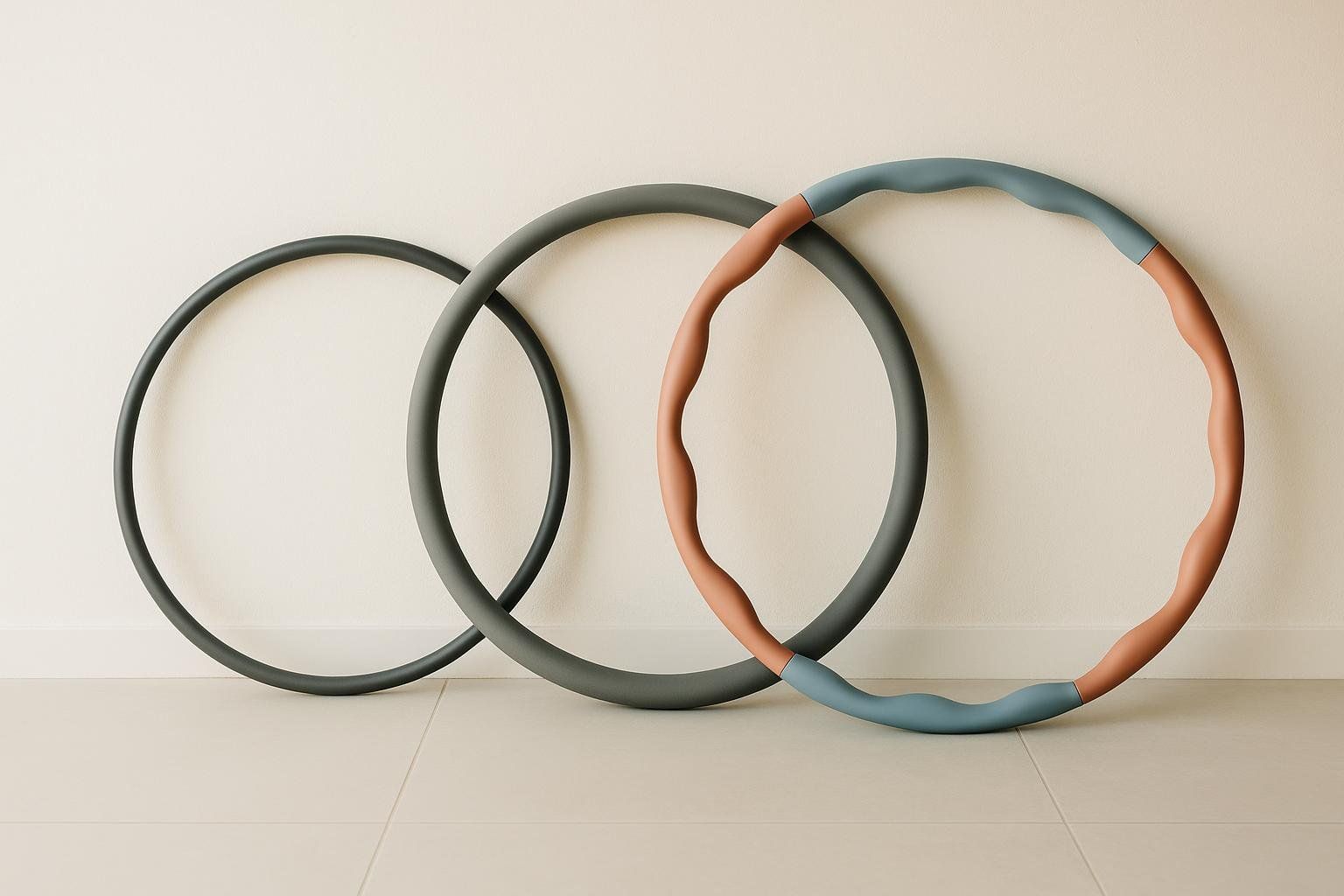
Technique 101: Learn the motion fast
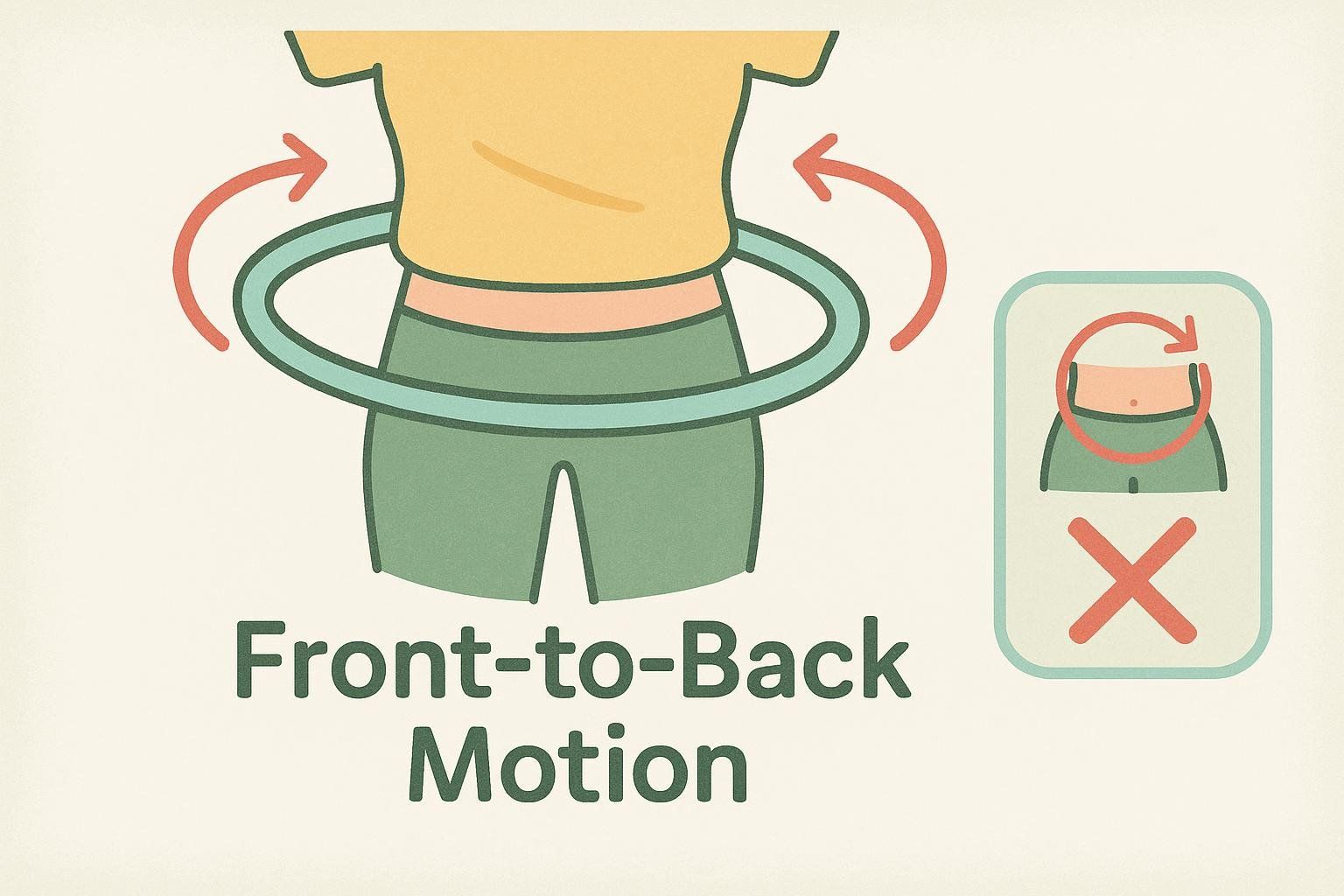
- Stance: Stand tall with feet about hip‑width, with one foot a half‑step forward.
- Start: Hold the hoop level at your lower abdomen and give it a firm, even push around your waist.
- Motion: Think “front‑to‑back” weight shift rather than big circles with your hips. Keep the ribs down, brace lightly, and breathe.
- Hands: Hover for balance, but avoid grabbing the hoop once it’s spinning.
- Common fixes (front/back drops):
- If the hoop drops in front, drive your front hip forward a bit sooner.
- If it drops behind, press your back hip back a touch earlier.
Pro tip: Use our effort guide to stay in the sweet spot—moderate to hard but controlled. See the RPE guide to calibrate “how it should feel.”
A 15‑minute beginner routine (3×/week)
Warm‑up (2 minutes)
- March in place + arm circles, then practice 2–3 hoop start attempts for 10–15 seconds each.
Main set with built‑in progression (start where you are)
- Weeks 1–2: Do 4 rounds — 45 seconds hooping (RPE 5–6) + 75 seconds easy walking or slow hooping (RPE 2–3). Total work ≈ 3 minutes; total session ≈ 10 minutes.
- Weeks 3–4: Do 5 rounds — 60 seconds hooping (RPE 5–6) + 60 seconds easy recovery (RPE 2–3). Total work ≈ 5 minutes; total session ≈ 12–13 minutes.
- Weeks 5–6: Do 6 rounds — 60 seconds hooping (RPE 5–6, two rounds at RPE 7 optional) + 45–60 seconds easy recovery. Total work ≈ 6 minutes; total session ≈ 14–16 minutes.
Cool‑down (3 minutes)
- Gentle torso rotations and side bends; 3 easy practice starts focusing on smooth breathing.
Short daily bouts or a few longer weekly sessions both count toward the recommended 150 minutes/week of moderate activity—choose what fits your schedule (Mayo Clinic).
To enhance your results, pair this routine with twice‑weekly strength training sessions.
Safety tips and common pitfalls
- Start lighter and larger: Heavier hoops may bruise the waist/hips early on; 1–2 lb is plenty for learning.
- Session frequency: 2–3 days/week is a sustainable cadence at first; daily high‑volume sessions can irritate tissues. Build gradually (GoodRx).
- “Smart” hoops: Ensure a snug but not restrictive belt; watch for skin pinching and avoid excessively heavy tethered weights (GoodRx).
- Skin protection: Wear a fitted top to reduce friction. If you bruise easily, shorten sessions and re‑check technique.
- Back comfort: Keep a light brace and neutral spine; if hooping aggravates your back, stop and consult a clinician (Mayo Clinic).
- Space: Clear a 6–8 ft radius; avoid pets, furniture, and wall corners.
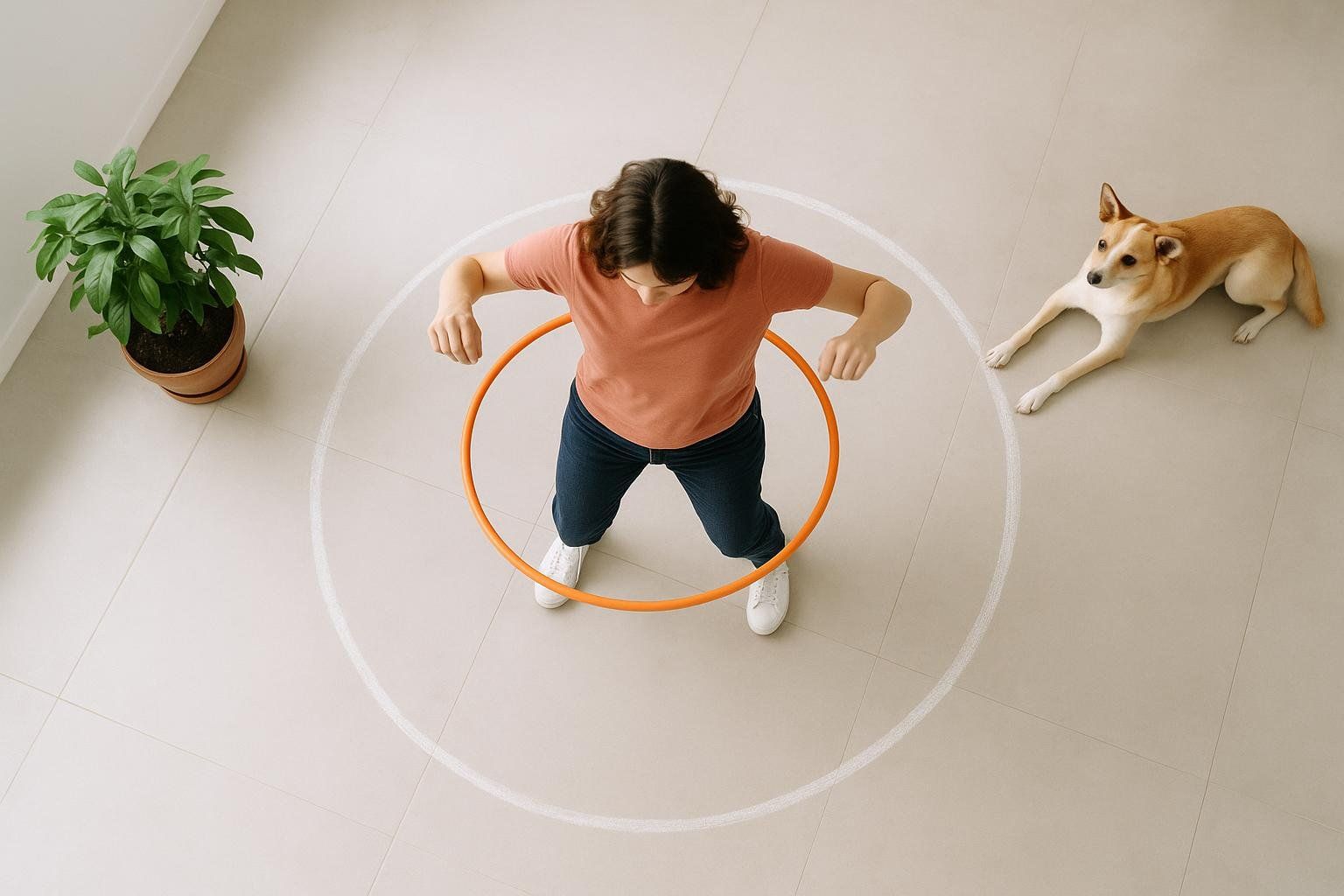
How to measure progress (beyond the scale)
- Waist circumference: Measure at the midpoint between your lowest rib and iliac crest—then re‑measure every 2–4 weeks using our fast, accurate method for how to measure your waist.
- DEXA body composition: A BodySpec scan quantifies total/region fat, trunk lean, and visceral fat estimates to validate real change in as little as 6–8 weeks.
- Effort tracking: Use the RPE guide to keep most hoop minutes at RPE 5–6 with a sprinkling of RPE 7 efforts as you improve.
Trainer’s toolkit (for group classes)
- Quick screens and cautions: Ask about back pain, hernia, pregnancy/postpartum status, and comfort with light torso pressure before class. Encourage opt‑out/alternatives. Mayo Clinic advises clinician consult for back issues and stopping with any pain (Mayo Clinic).
- Equipment matrix: Stock 37–45" hoops across 1–2 lb. Larger diameters for beginners; smaller for advanced control (ACE).
- Space & flow: Mark 6–8 ft circles. Teach the front‑back hip shift and one‑foot‑forward stance first; add turns and gentle directional changes later.
- Programming: Intervals of 45–90 seconds work well for beginners. Mix in walking recovery and light mobility.
- Progress markers: Track 60‑second unbroken spins, reduced drop frequency, and RPE control. Offer optional DEXA scan for progress tracking for trunk lean and android fat.
FAQs
-
Will a weighted hoop slim my waist?
It can help when part of a broader plan. Studies show reductions in waist/abdominal fat and LDL cholesterol over 6 weeks with consistent hooping, but results vary by nutrition and total activity (2019 RCT; PubMed trial). Track changes objectively with a DEXA scan. -
How heavy should my first hoop be?
Most beginners do best with 1–2 lb and a diameter that reaches between the waist and mid‑chest when stood up (GoodRx; Mayo Clinic). -
How often should I hoop?
Start with 2–3 days/week for 10–20 minutes and build gradually. Daily high‑volume sessions can irritate tissues; ease in and add time as comfort improves (GoodRx). -
Does hooping count as strength training?
It’s primarily cardio with trunk‑muscle engagement. Consider adding 2–3 weekly strength sessions for best results. -
What if I bruise?
Scale back duration, re‑check technique (front‑back weight shift, light brace), and consider a smoother/padded hoop. Persistent pain is a stop signal—consult a clinician (Mayo Clinic). -
Can I hoop if I’m pregnant or recently postpartum?
Get medical clearance first. Many prefer to pause hooping during pregnancy and for a time postpartum, especially if managing diastasis recti. Work with a qualified clinician (e.g., pelvic floor physical therapist) to plan your return to activity.
Bottom line
Weighted hula hooping is a playful, joint‑friendly way to log meaningful cardio and engage your core. Choose a beginner‑friendly size and weight, practice the front‑back weight shift, and start with short intervals 2–3 times per week. Pair it with strength training and nutrition basics, and measure your progress—not just by steps or the mirror, but by composition metrics on a BodySpec DEXA scan.
Ready to see real change? Book a scan, follow the 6‑week plan, and check your android fat and trunk lean mass on your follow‑up.


